QuestionLast year we bought a new Biorb for our boys for Christmas. We started with one fish and gradually introduced 2 more (over three months). Then within a week of the third one coming they all died. We started again and it happened with two. We gave it a rest for a year because the children were upset (as were Mom and Dad). We have now tried again. We gave the tank a good clean, new filter, water ready and headed to the fish store... they advised it was okay to put two in at once. Thus we did, one white and orange (fantail I think) and then a black bulby eyed fat one (goby I think). They have both done really well for 3 weeks and have just noticed in last 24 hours that Black one is resting on bottom, fins are droopy, starting to loose his strong black colour. Still swimming, but slow and wants to eat but we have cut back dramatically on food. I have done all of the water tests - PH, Nitrite, etc. and all test normal. Have now inserted a biorb medic filter... they recommended. Anything else I can do??? Worried we are doing something wrong as this seems to be a repeat cycle. Please advise.
AnswerGood evening Paula, thank you for your question.
My heart goes out to you. In as much as possible, do try to explain to your children - and know for your sake - that the problems that you are experiencing are really in no way your fault. The limitations of the BiOrb have been your downfall.
Why this product was marketed as the "new goldfish bowl" I have no idea, what with the popularity of bettas! A BiOrb would make a perfect home for a betta, but certainly not a goldfish. I'll explain why in a moment, but first read here:
http://freshaquarium.about.com/cs/beginnerinfo/a/fishcalc.htm
Multiplying the length and the width and then dividing by 12 is not a formula that will apply to your situation, because the surface area in your BiOrb is based on just that relatively narrow opening at the top. Even adding extra aeration cannot begin to compensate for the lack of oxygen exchange in such a setup, vs a traditional rectangular tank.
Of course, this would not be an issue for bettas, who are equipped with a special organ (called a labyrinth organ) that allows them to take in water directly from the surface, similar to a lung. And that's just the beginning...
Goldfish are massive waste producers at any age, but especially as they get older. Goldfish breeders change 90% of their tank's volume weekly just to compensate. Therefore, a goldfish tank needs adequate filtration, and a minimum of 10 gallons per individual (20 gallons is best) is recommended. Even with light feeding, you cannot keep goldfish from doing what they do...#2, and lots of it!
Okay, now that you are warned of the limitations in filtration, space requirements, and inherent troubles with the high form, low function design of this BiOrb, what do you say? Are you ready to tell the kids that the goldfish have to go back to the pet store and be exchanged for a betta? If they really want more than one fish in there, a few female bettas would likely be just fine...
I do understand if I still can't convince you to take this drastic measure. I don't have kids, but I can only imagine. Let me just say that I really wish I were there to give your LFS (local fish store) a dressing down. I suppose it's no wonder that they advise you to buy more BiO-merchandise, but their advice defies common sense. Surely they have goldfish in their tanks and know how messy they are. My local fish store has 12-14 fancies in a 125 gallon tank. They are not on shared water since they are coldwater fish. I got a peek the other day at the filtration under the cabinet - wow! The works! This is the kind of setup that works long term for goldfish, and I know your local fish store knows that...
Do me a favor. Print this article and show it to your local fish store. Keep your eyes peeled for a better LFS in town!
http://www.fishkeeping.co.uk/modules/zmagazine/article.php?articleid=65
The best you can do right now is keep the water very clean, performing daily water changes of 10-20% if necessary. Make sure your test kit is measuring ammonia and nitrAtes, too. Generally speaking, as long as the water out of your tap is at neither extreme, if you just keep freshwater fish, do not concern yourself with the pH too much. Only saltwater and specialized freshwater fishkeepers (who want to breed fish or raise wild caught specimens) are the ones who need to tinker with and monitor pH, by using reverse osmosis / deionized water and then adding back buffers to replace the minerals that have been stripped during the RO/DI process.
Much more important is that your pH stays constant, and I must warn you, there can be drops in a system such as yours. I recommend you have an airstone going at all times in this system (not necessary if you switch to a betta setup, btw) and do monitor the water quality at least twice weekly.
I'm glad you have cut way back on feeding, this is crucial. Once a day is fine, even less if there is detectable ammonia or nitrite presence, or high nitrates. The fish aren't hungry when their water has nitrogenous waste buildup, and frankly, it's unavoidable here. As long as you have the goldfish, have a look at this fine article about what to feed your goldfish, variety is the key to their longevity...
http://www.wetwebmedia.com/FWSubWebIndex/gldfshmalnut.htm
....As well as low protein in their diet, since they are vegetarians for the most part. Keep in mind that they only need to eat as much as their eye mass daily to be healthy.
Best of luck to you, Paula, I'm sorry to be the bearer of bad news. I know you spent a bunch of money on this lovely looking tank. I assure you that a betta or even a small community of tropicals will be a trouble-free experience by comparison. It sounds like you are doing the best you can, it's certainly not your fault that most LFS cannot be trusted. Another reason why independent research is essential to be successful at this hobby in the long term.
Nicole

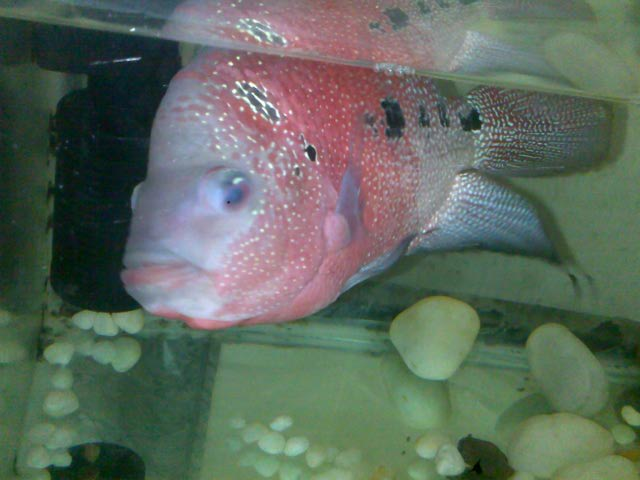 Flowerhorn Fish
Question
Last flowerhorn Fish Present Aquarium &n
Flowerhorn Fish
Question
Last flowerhorn Fish Present Aquarium &n
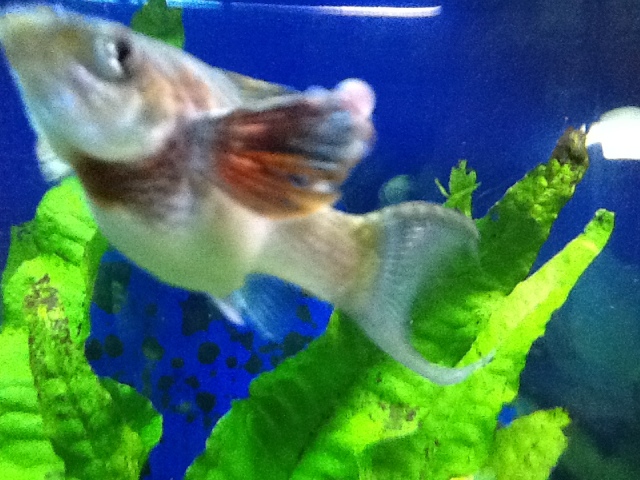 no one has any idea whats wrong with my fish
Question
molly
my molly fish about a month ago g
no one has any idea whats wrong with my fish
Question
molly
my molly fish about a month ago g
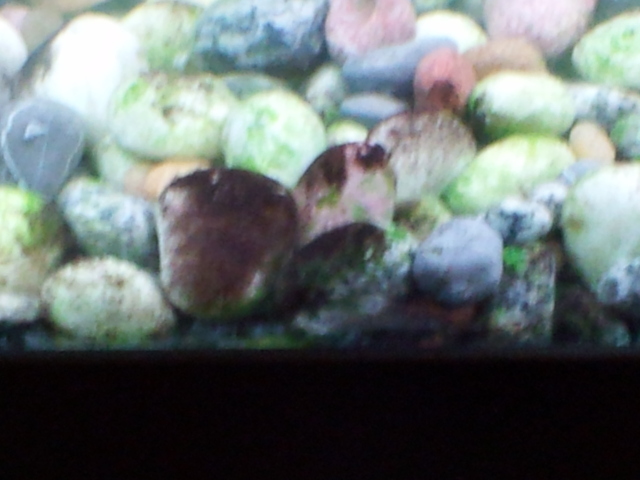 mold growing in our 150 gallon fishtank
Question
fish tank
We had Oscars in our tank and
mold growing in our 150 gallon fishtank
Question
fish tank
We had Oscars in our tank and
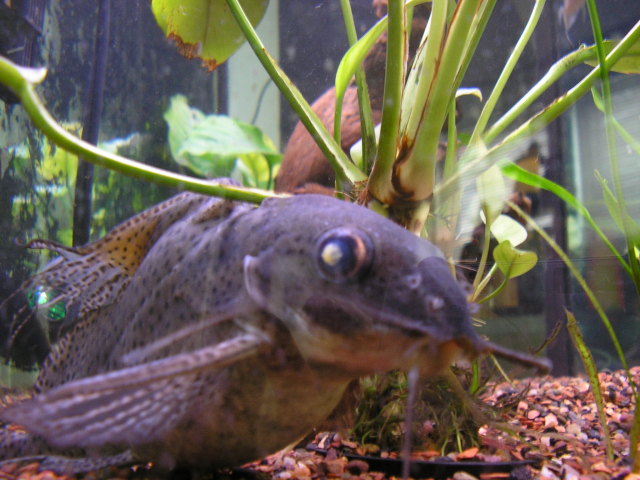 eye problem in black lace cat fish
QuestionQUESTION: This fish has what looks like yellowi
eye problem in black lace cat fish
QuestionQUESTION: This fish has what looks like yellowi
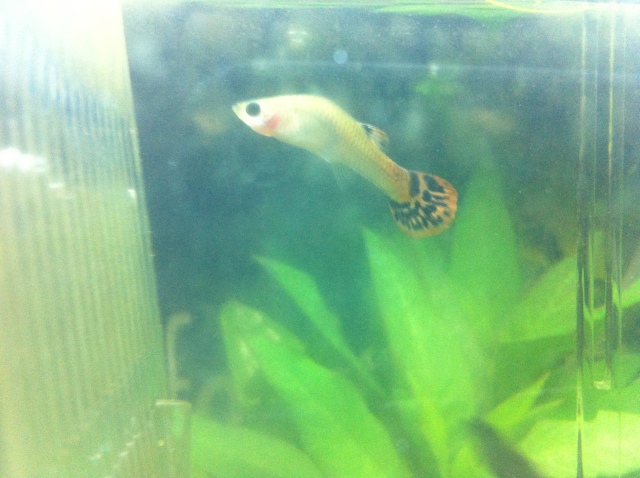 Female guppy with bent spine
QuestionQUESTION: I have a female guppy which has devel
Female guppy with bent spine
QuestionQUESTION: I have a female guppy which has devel